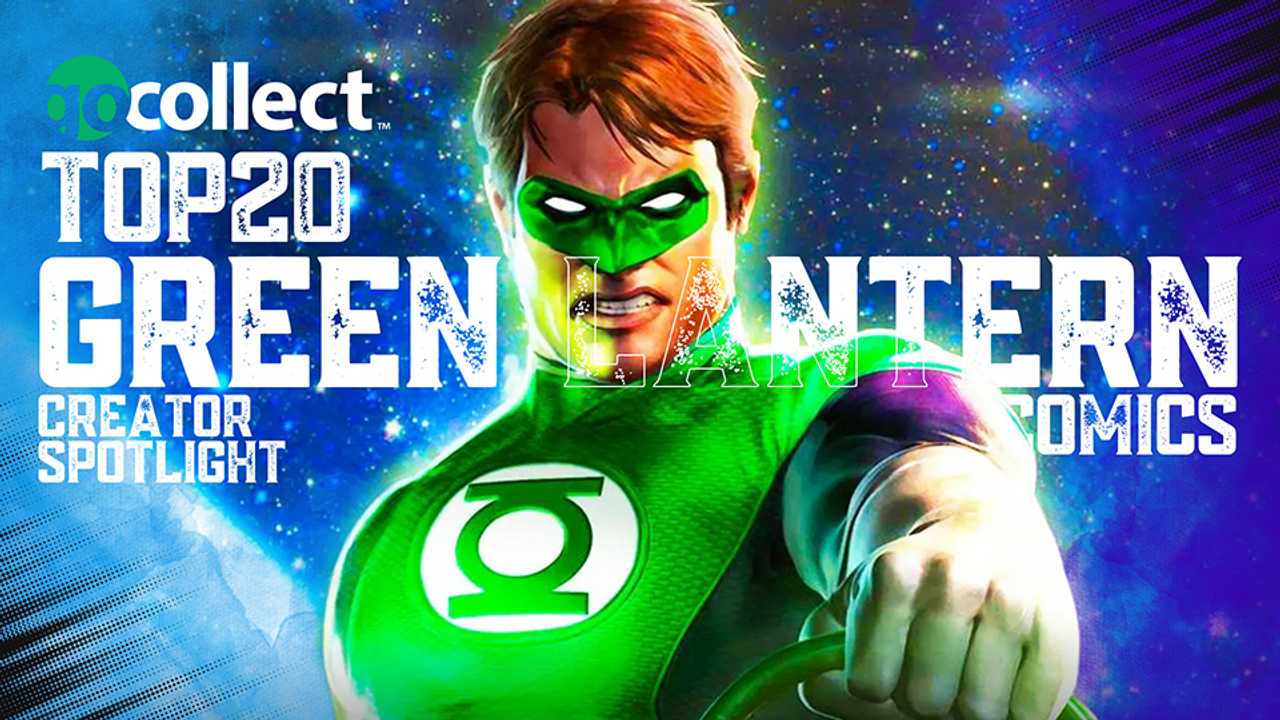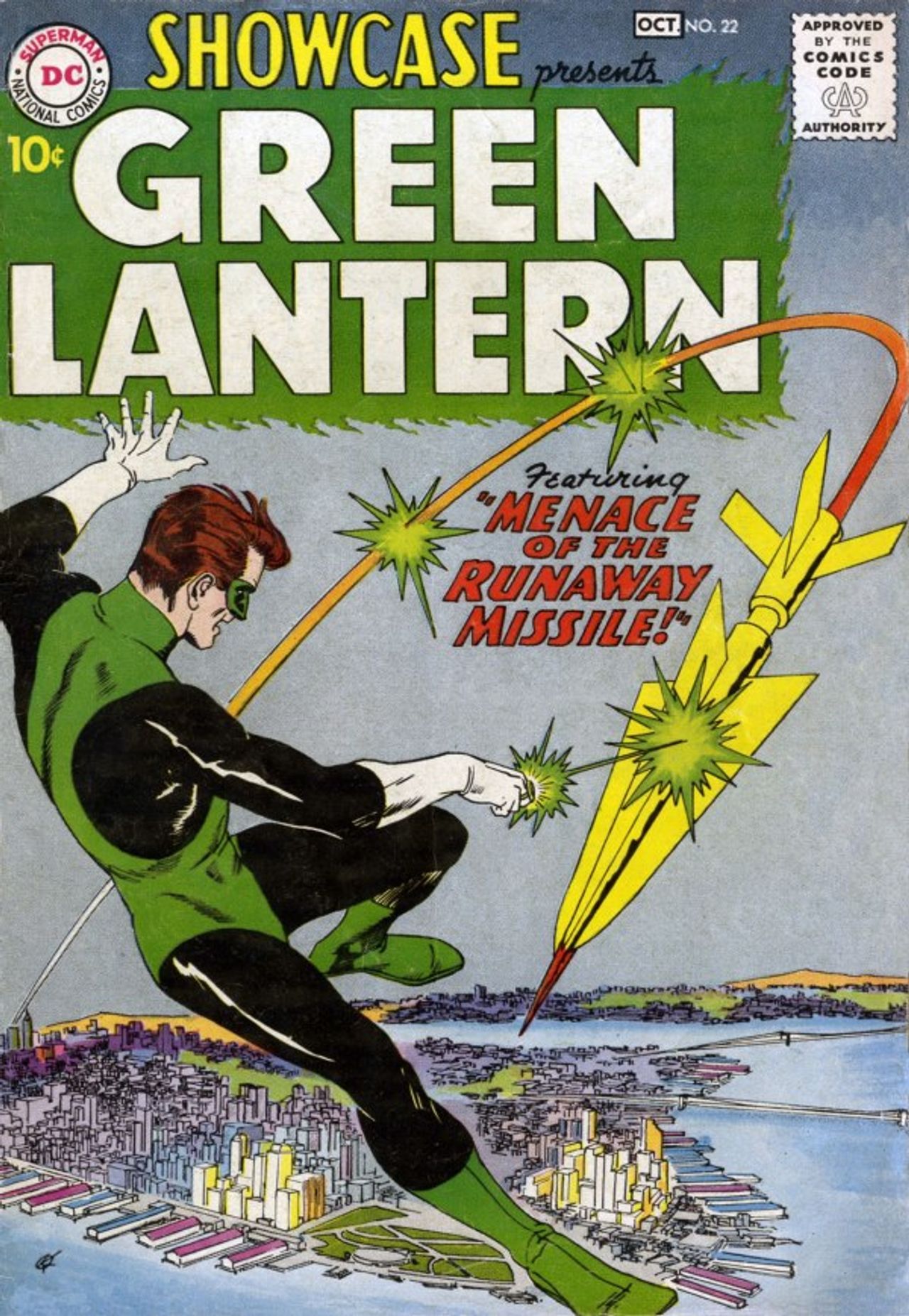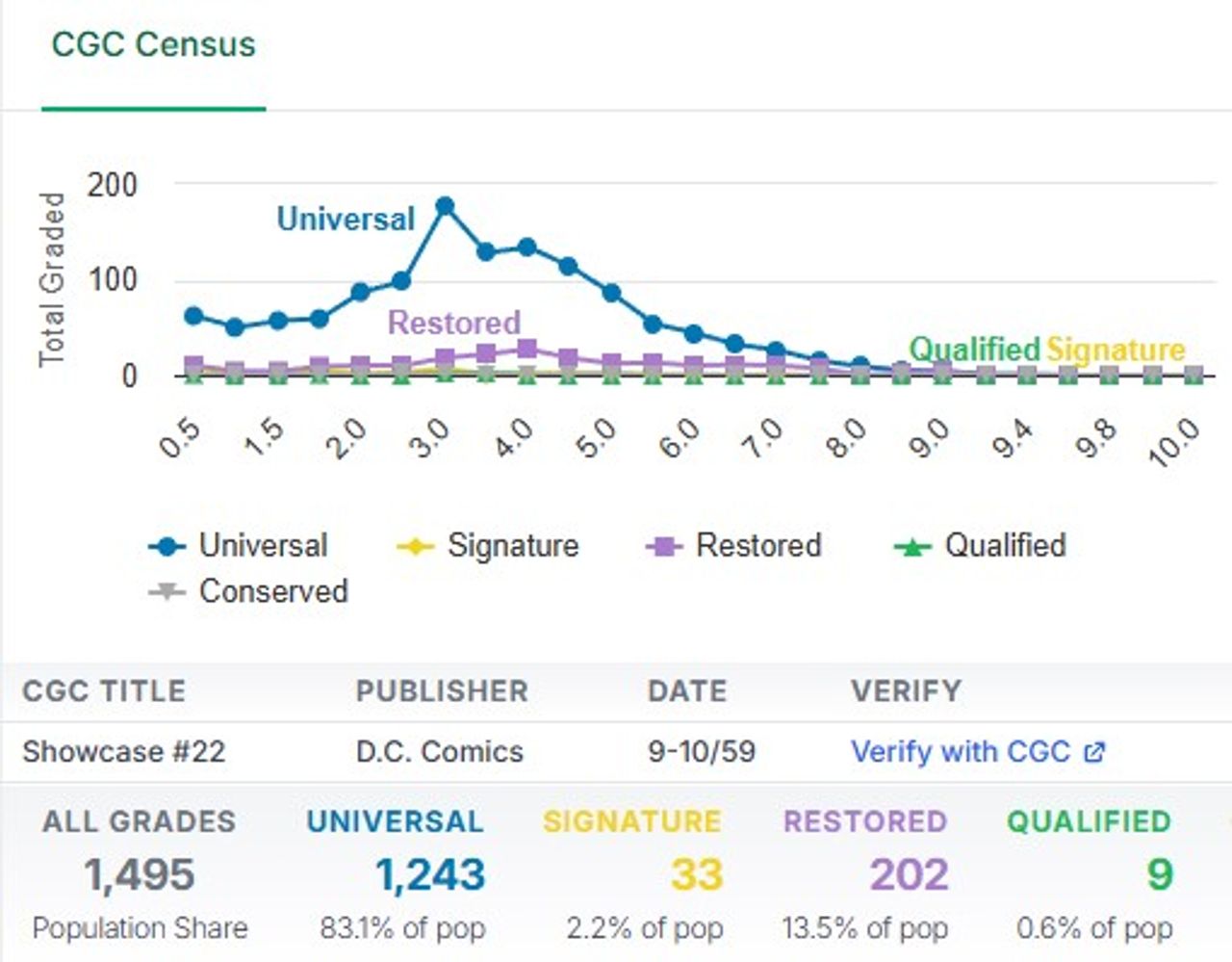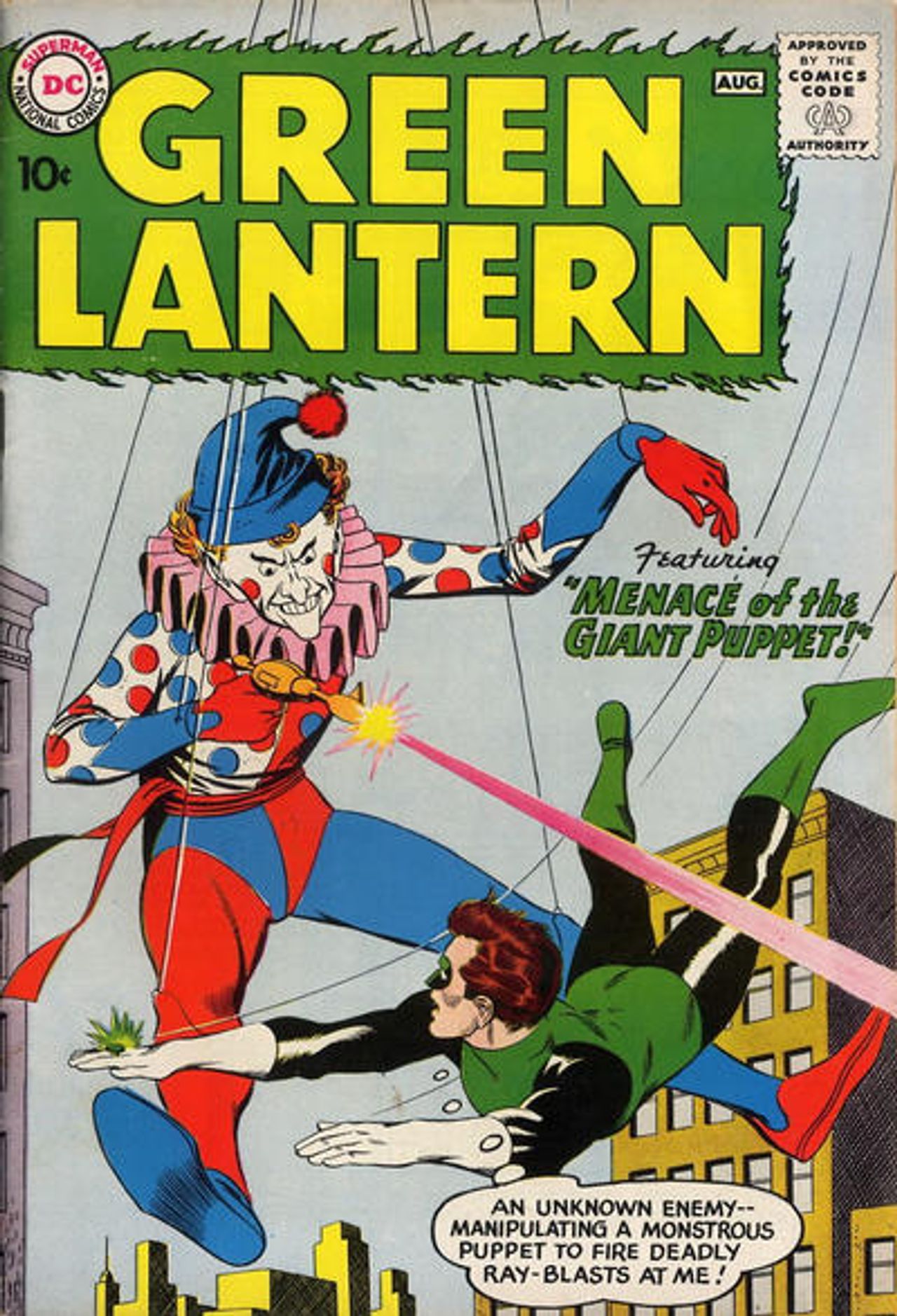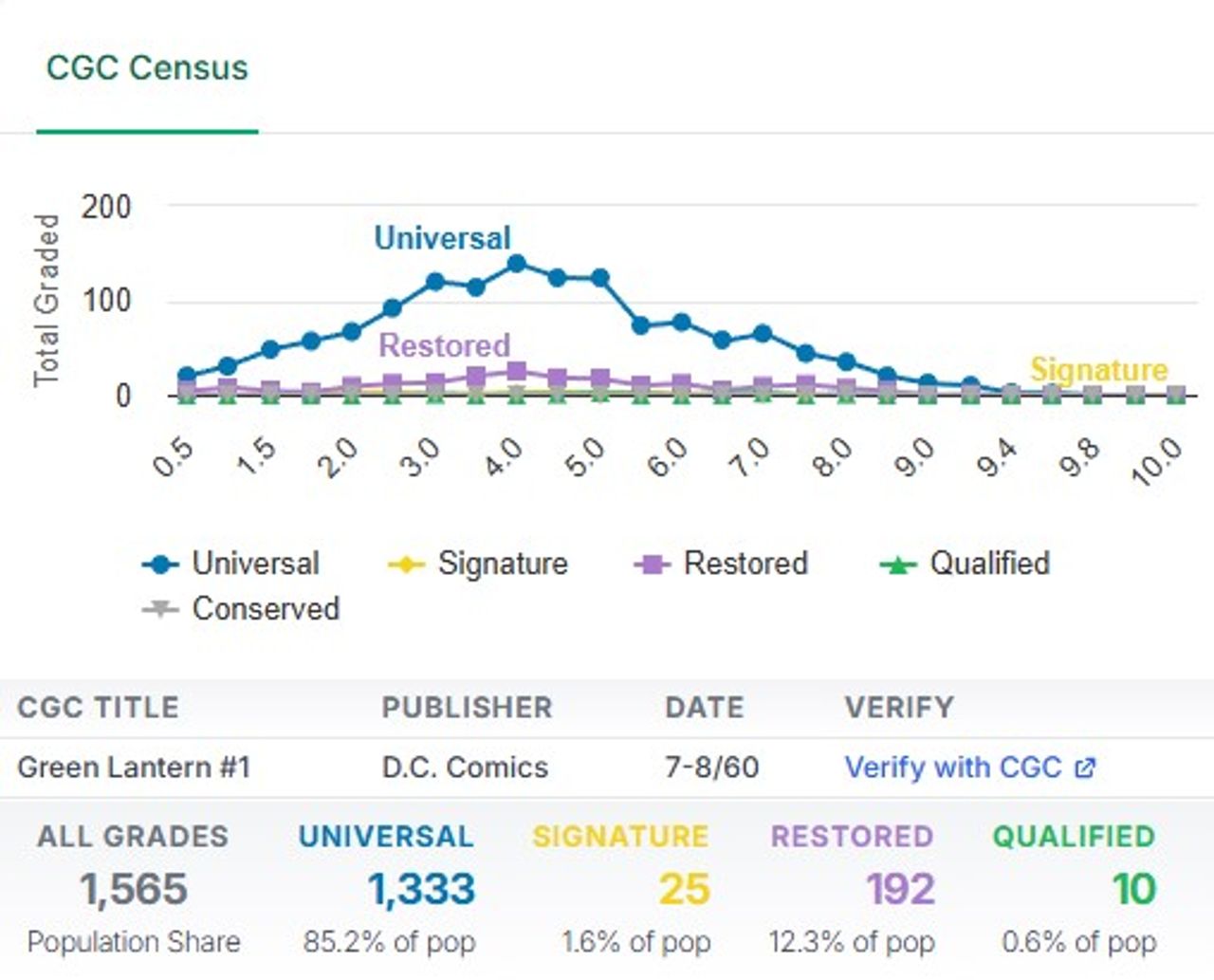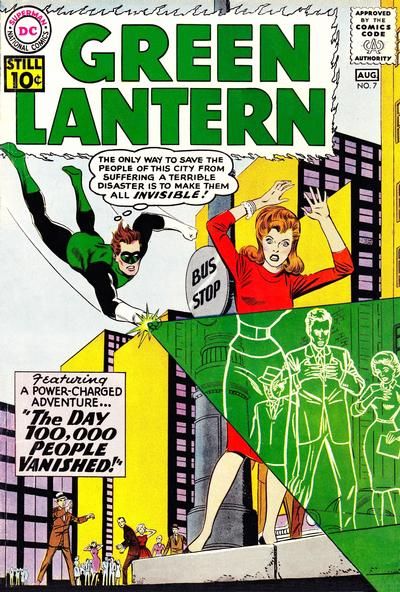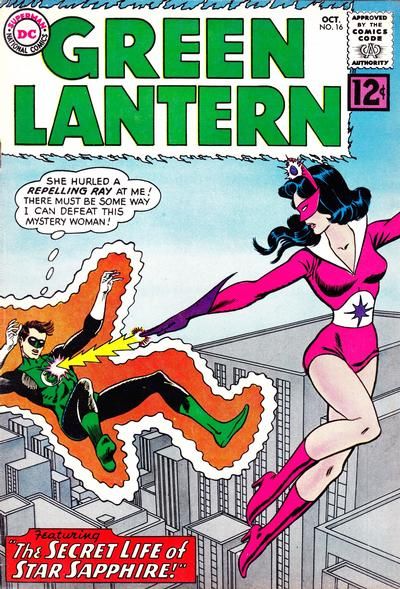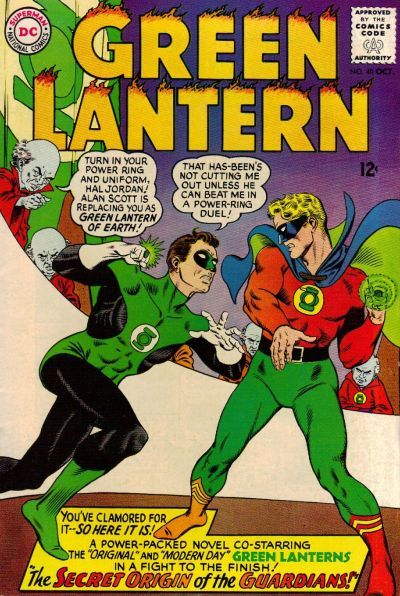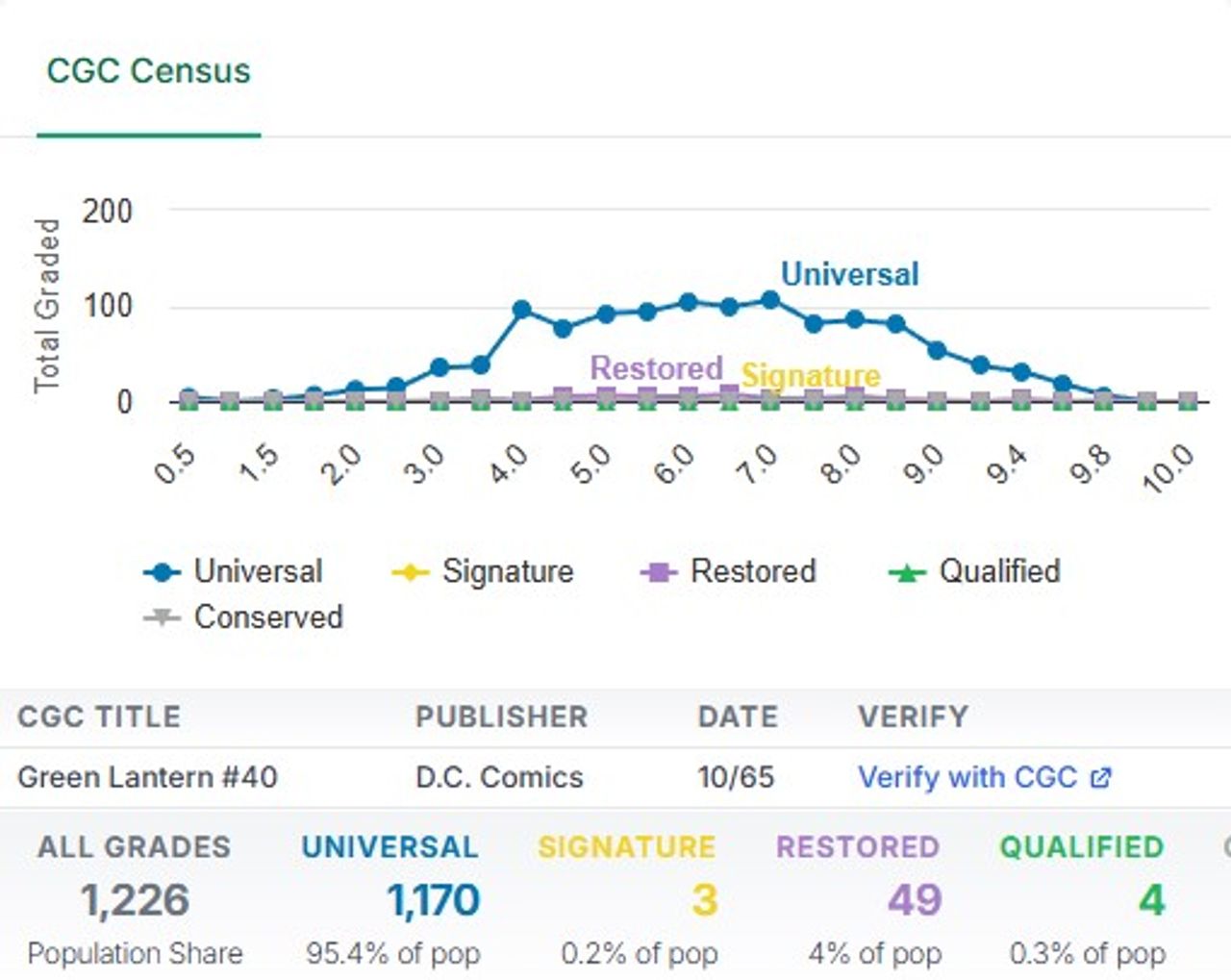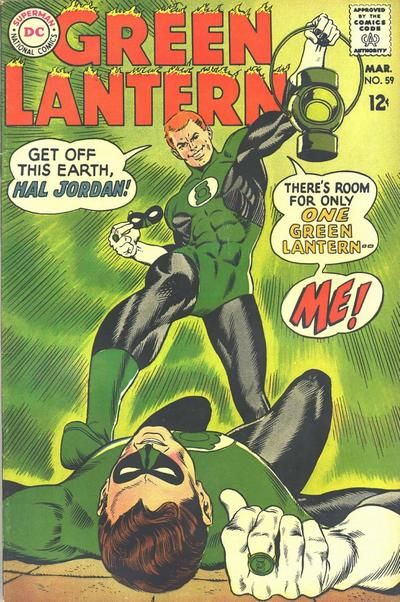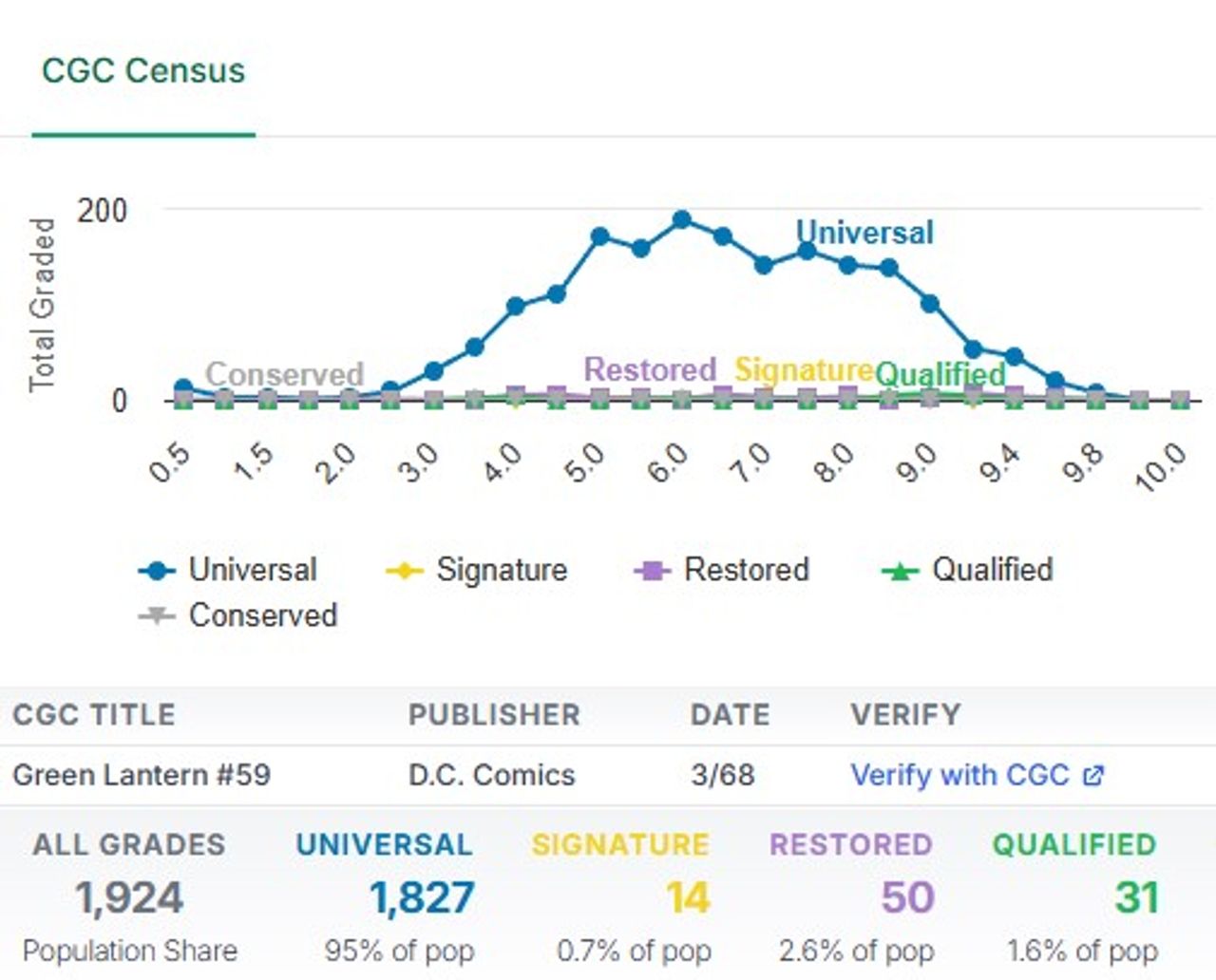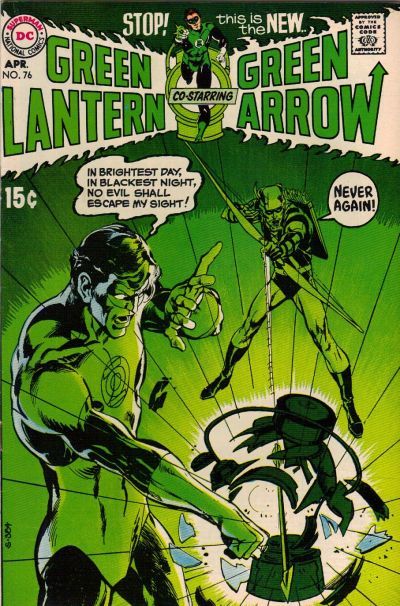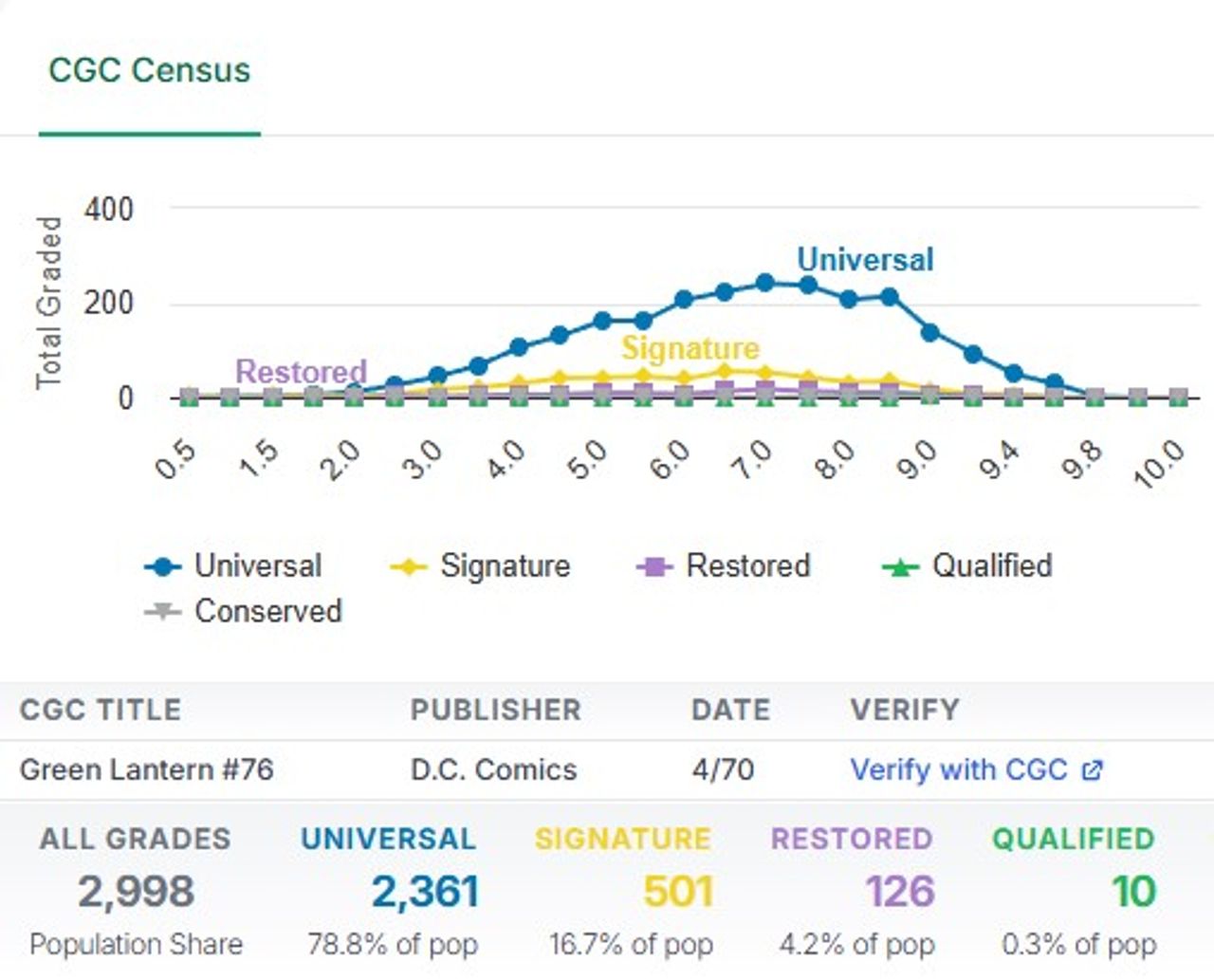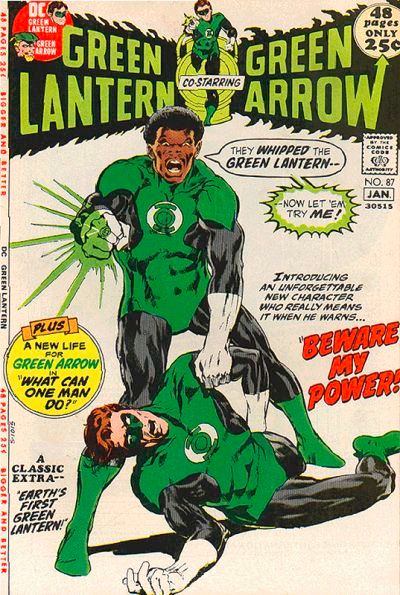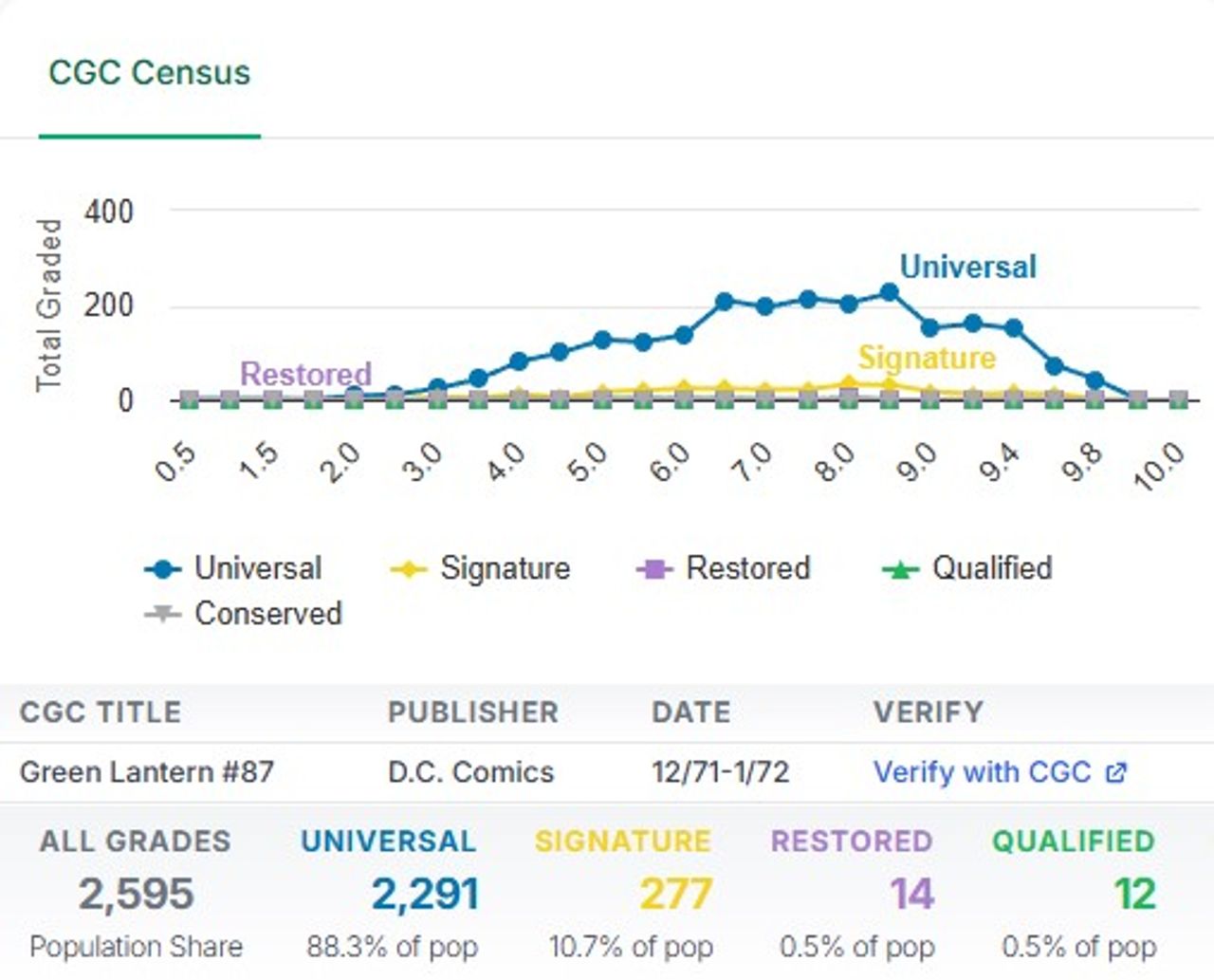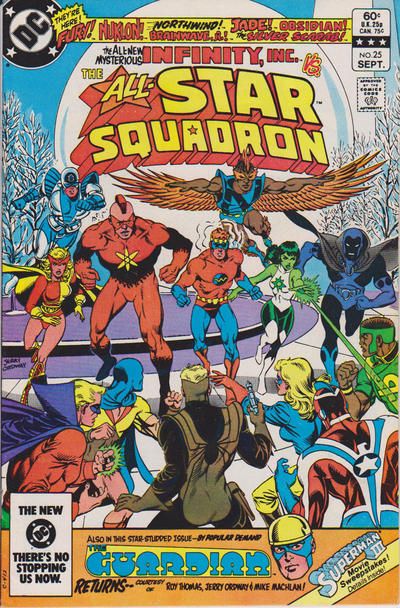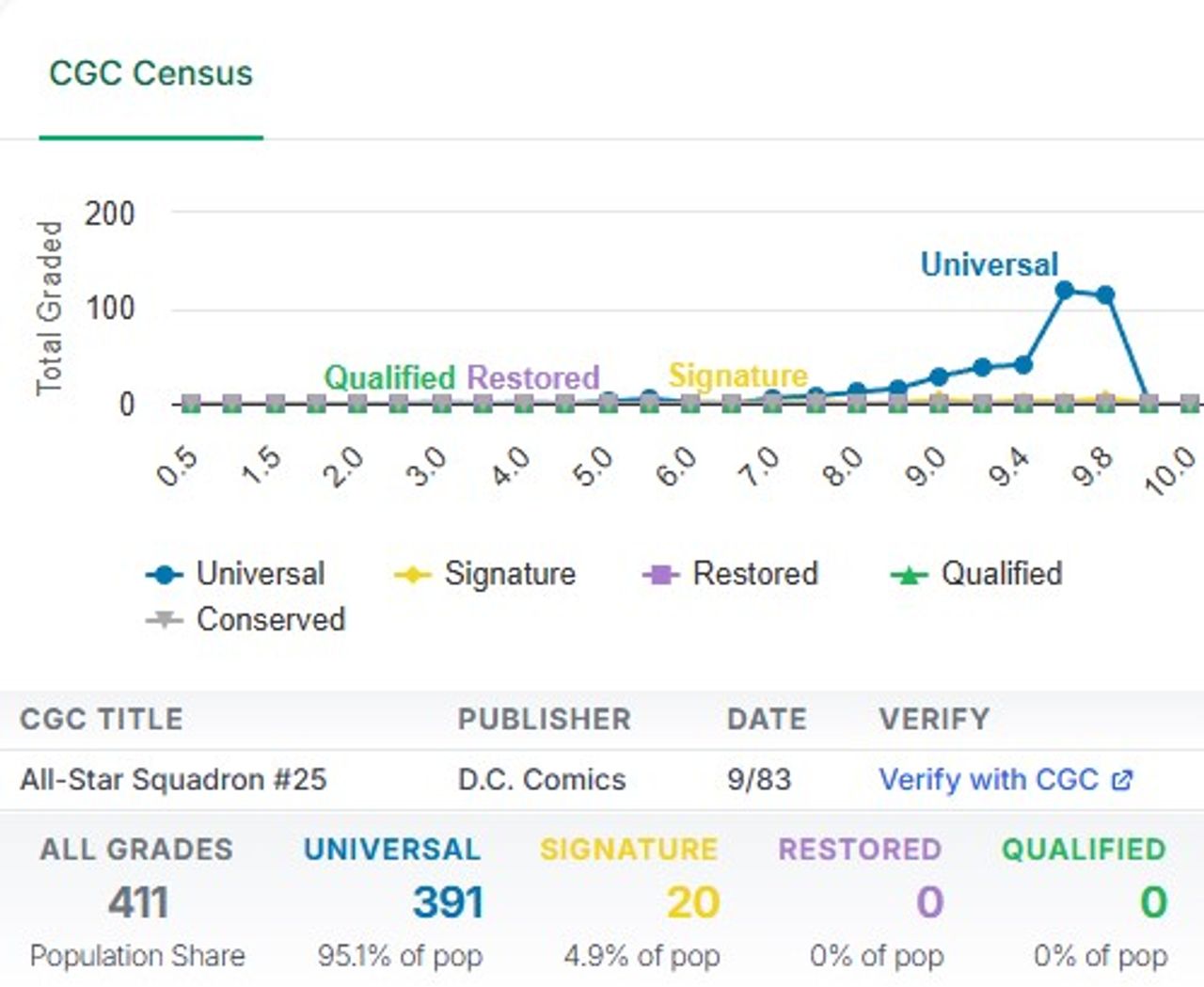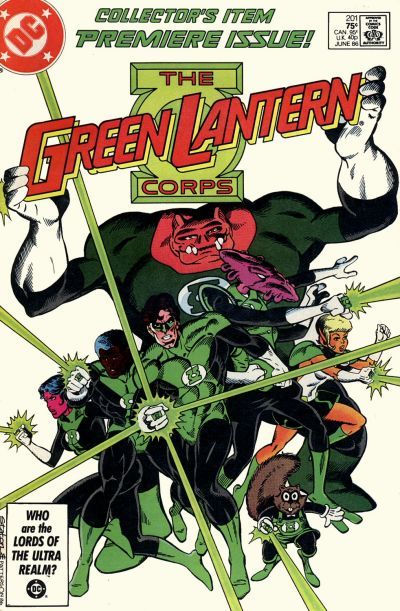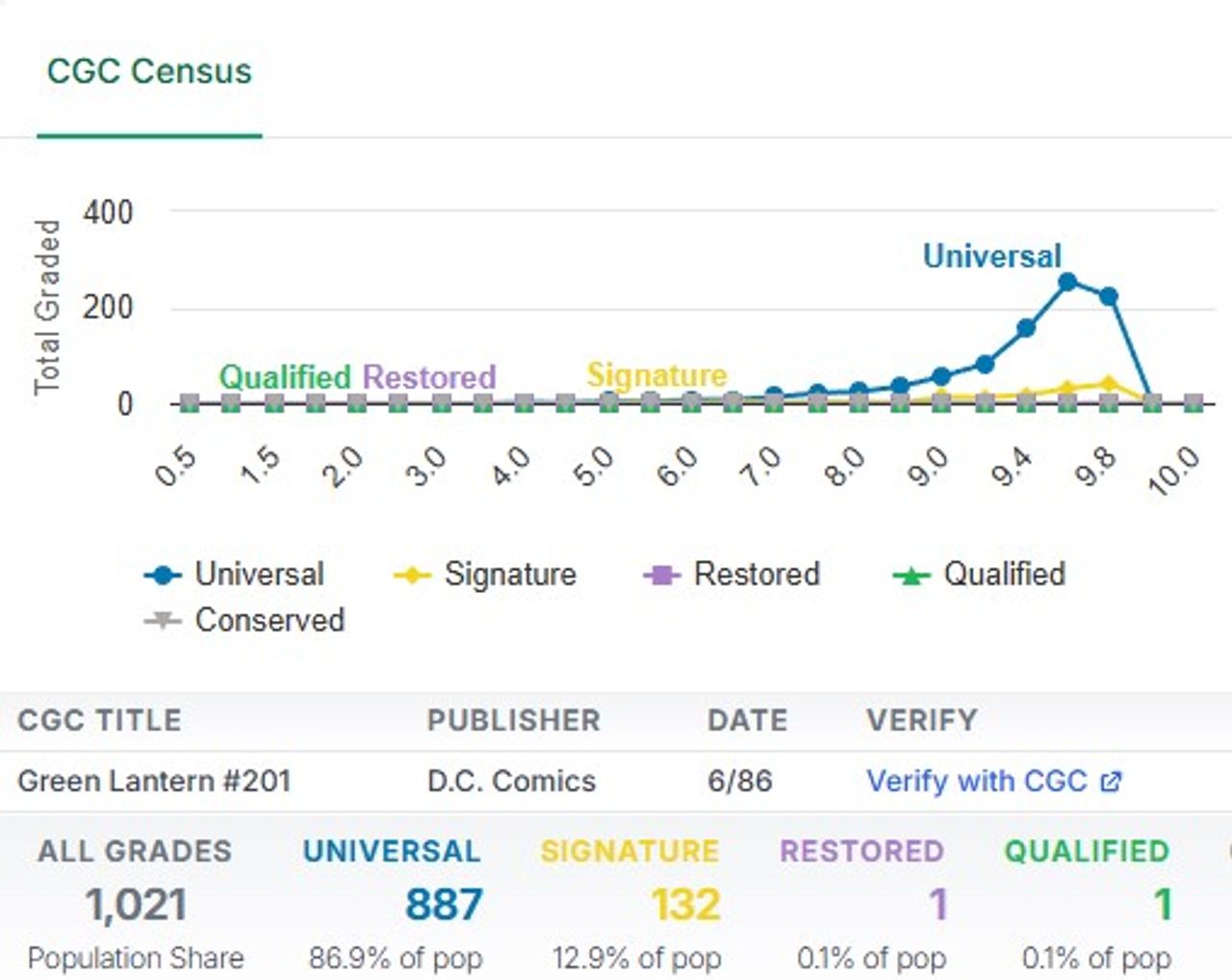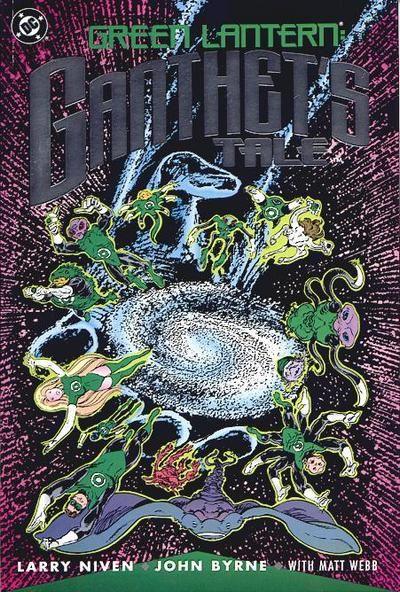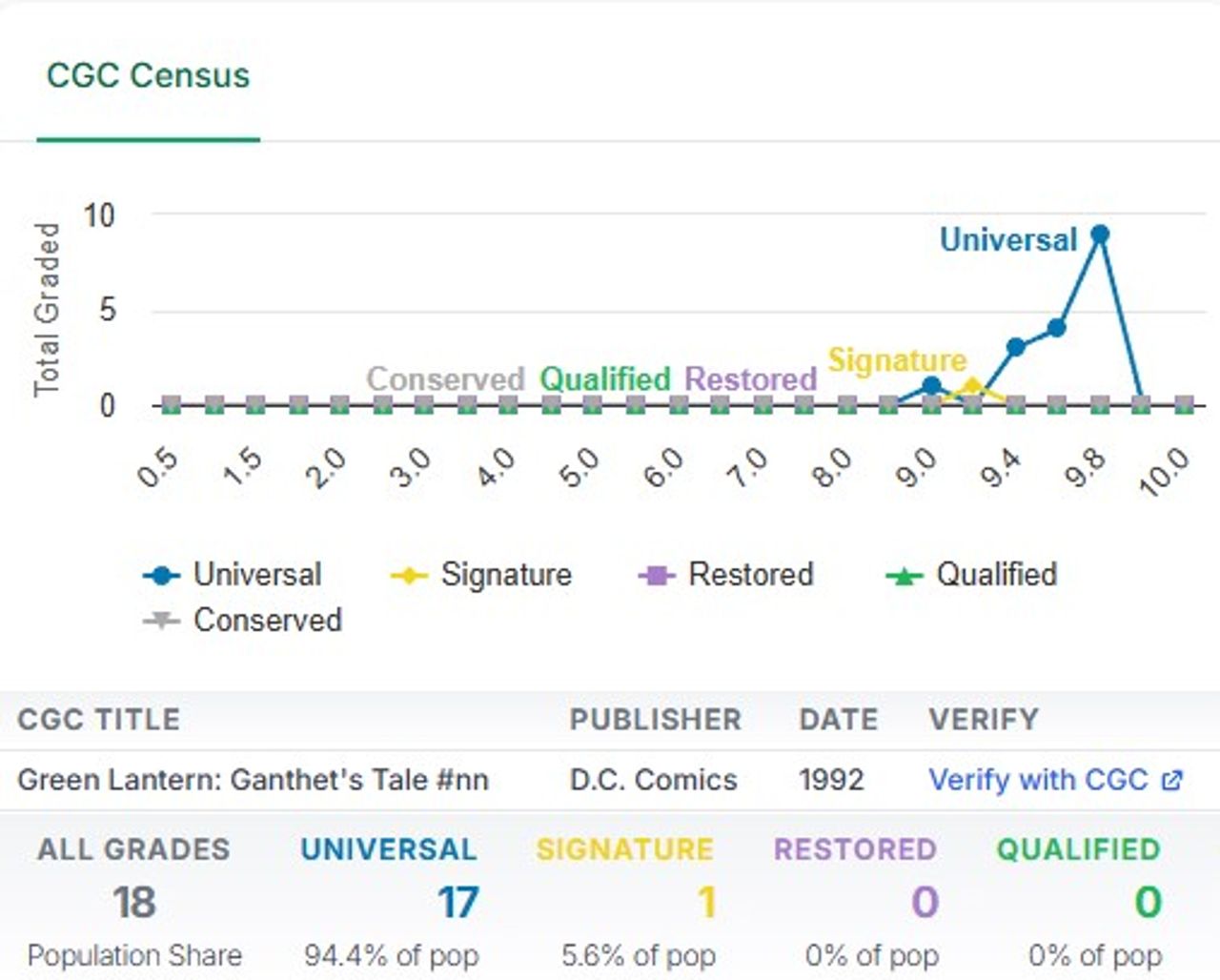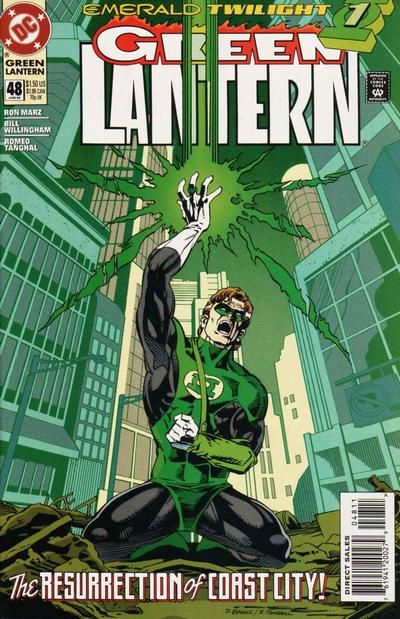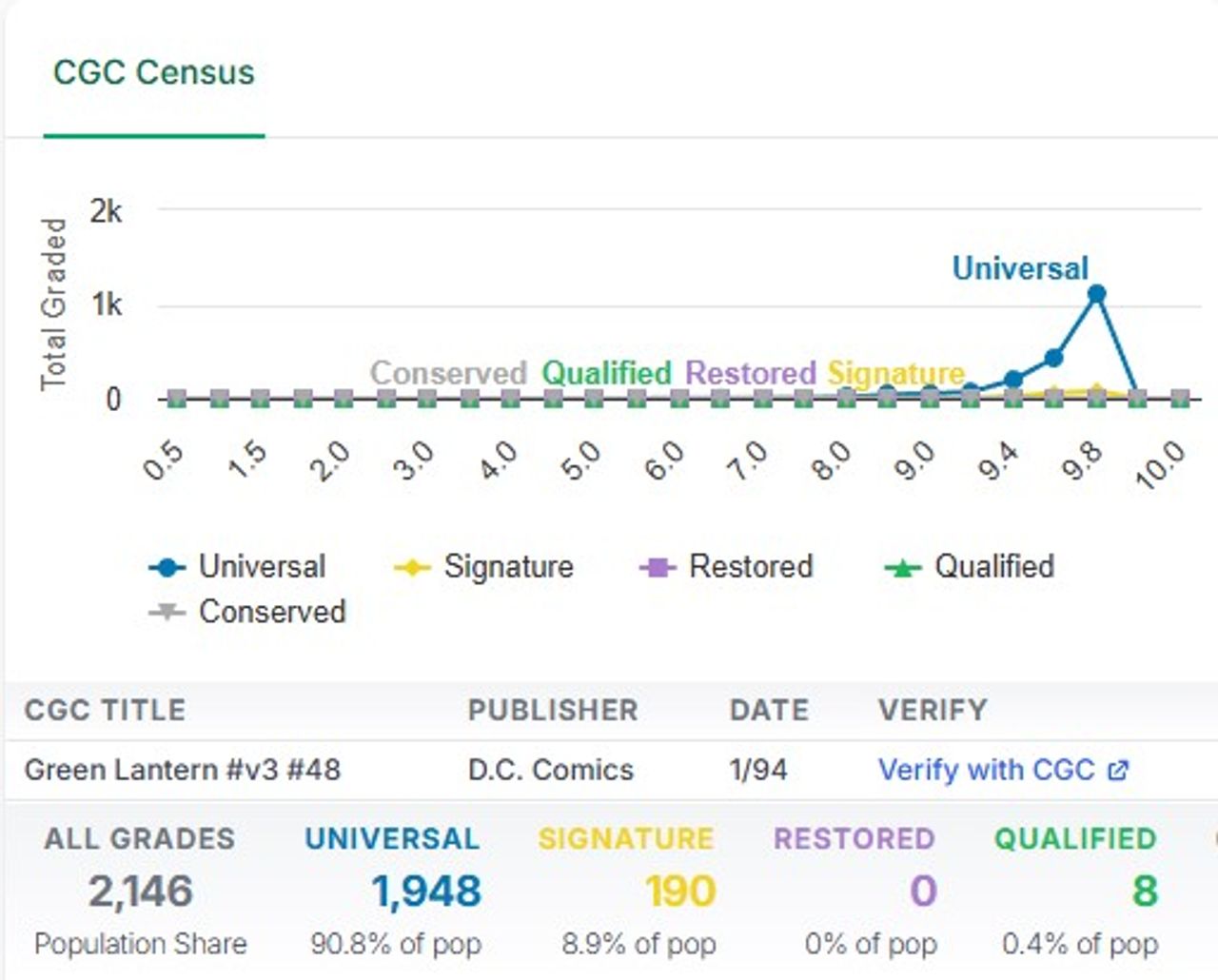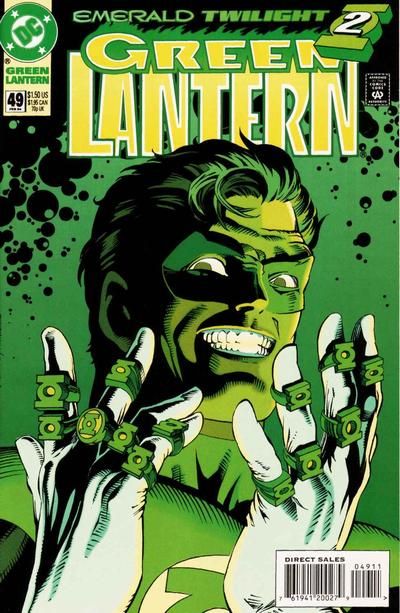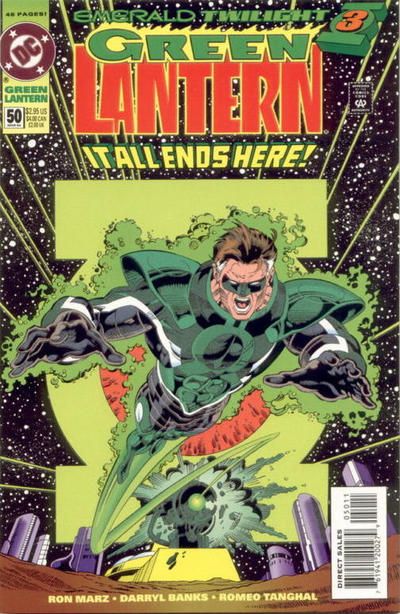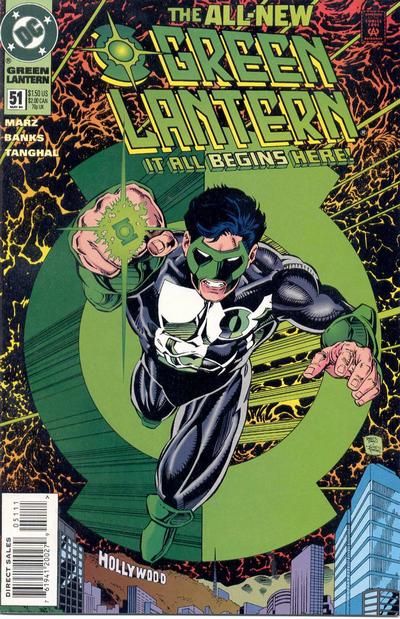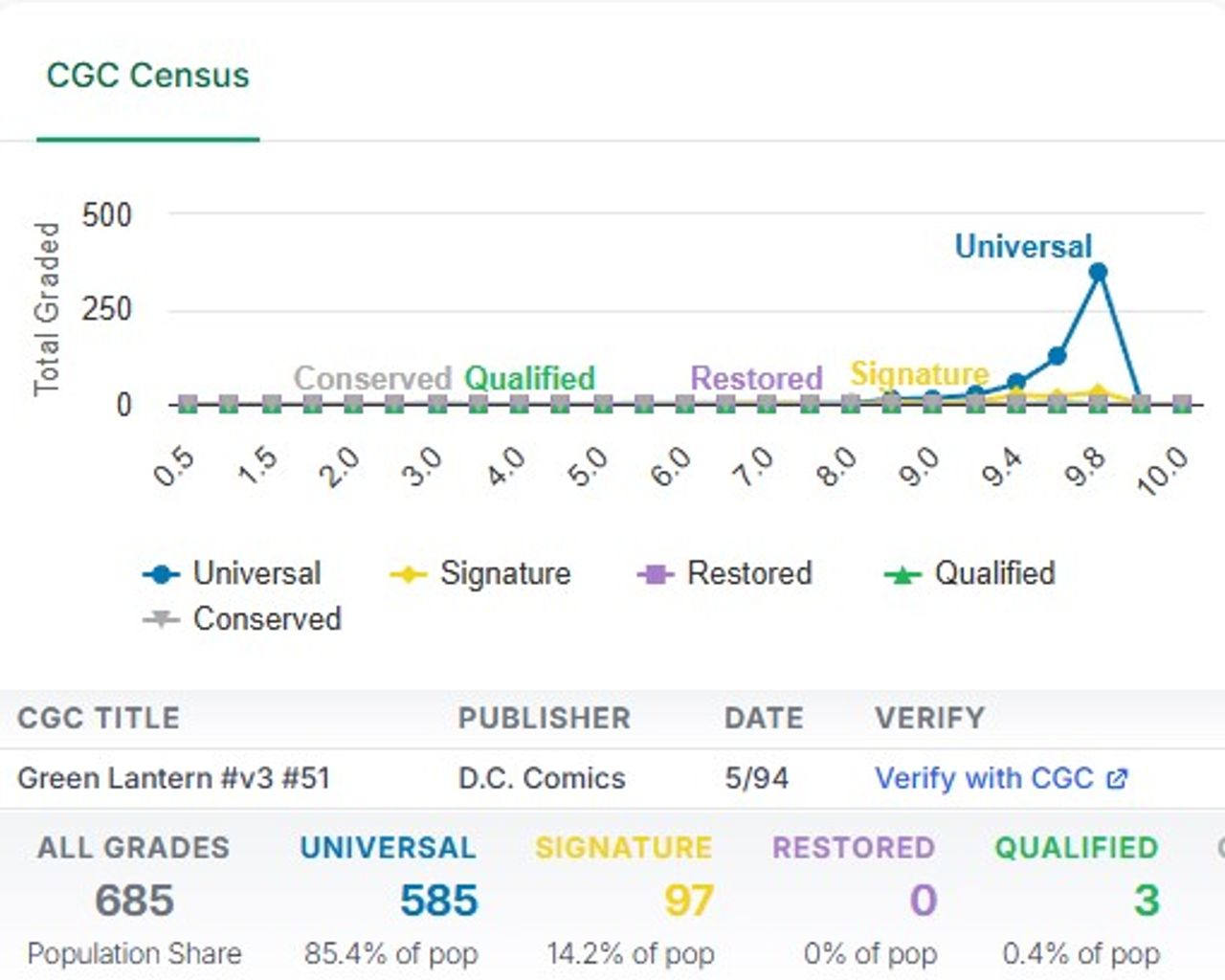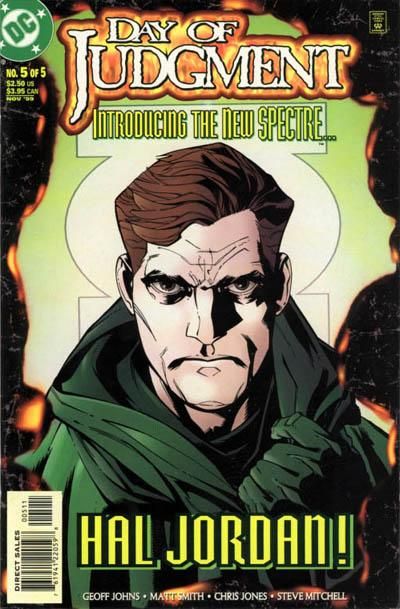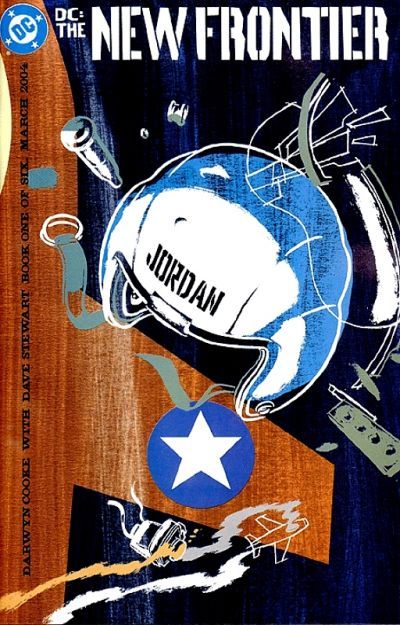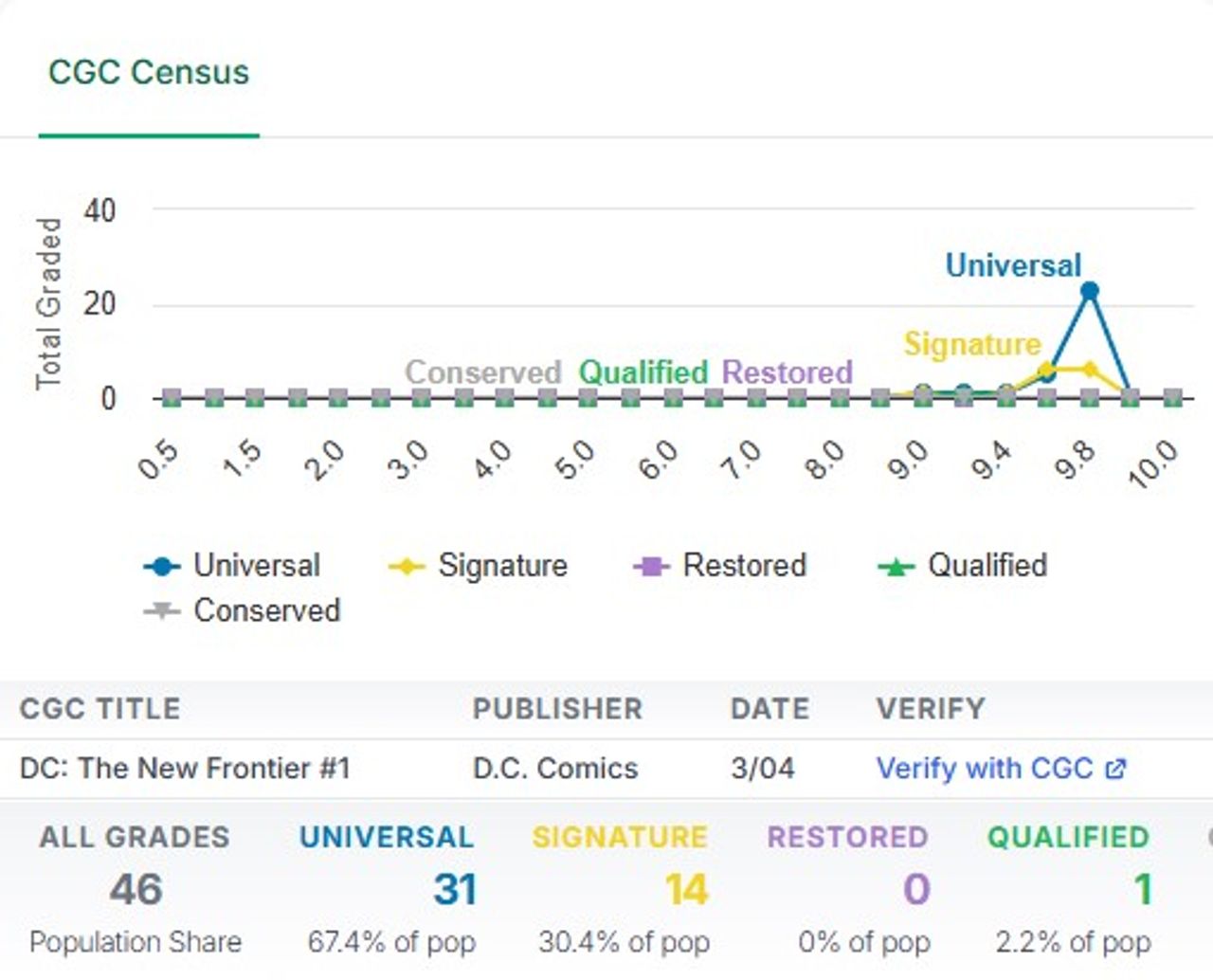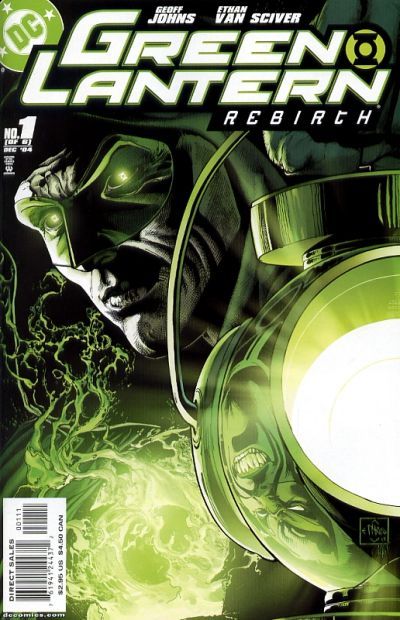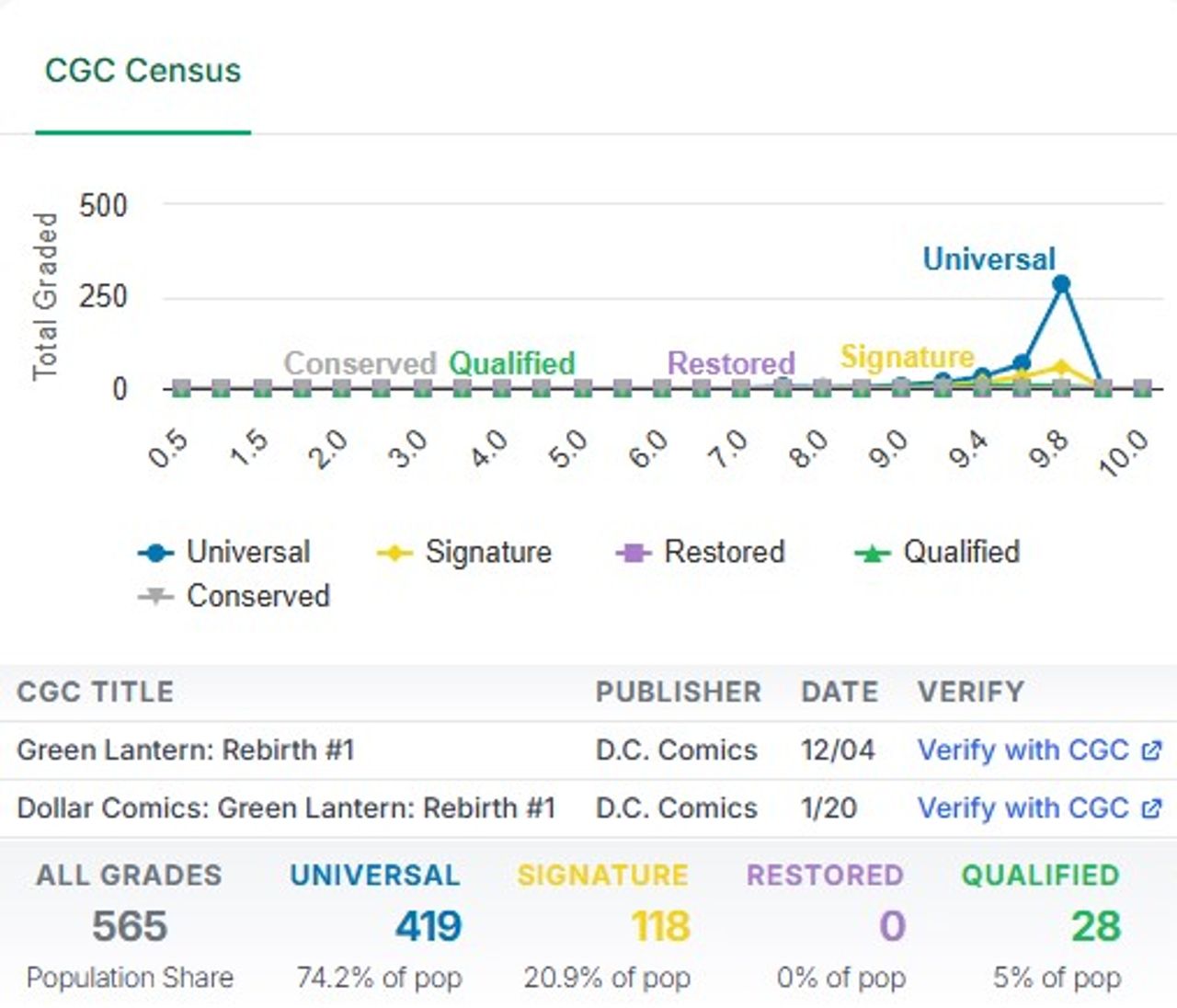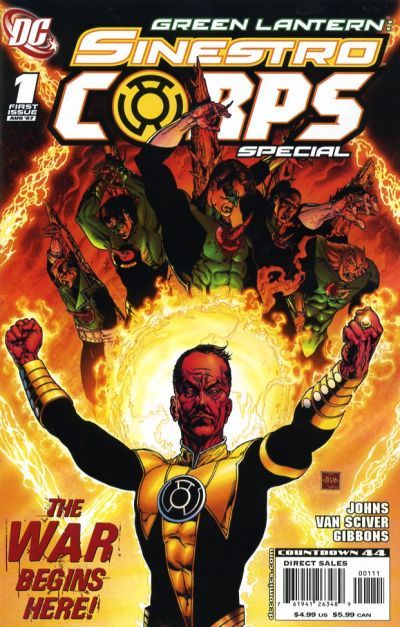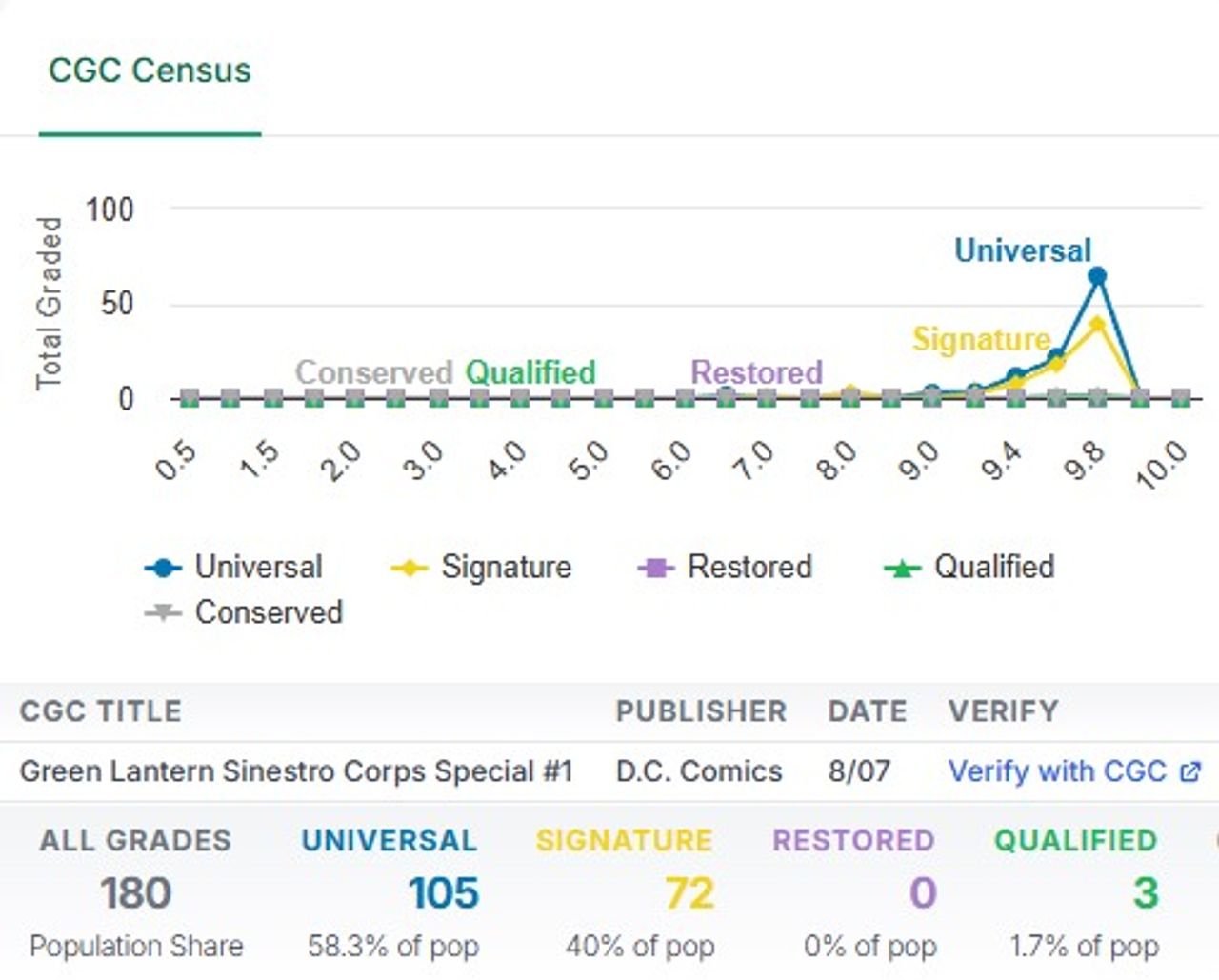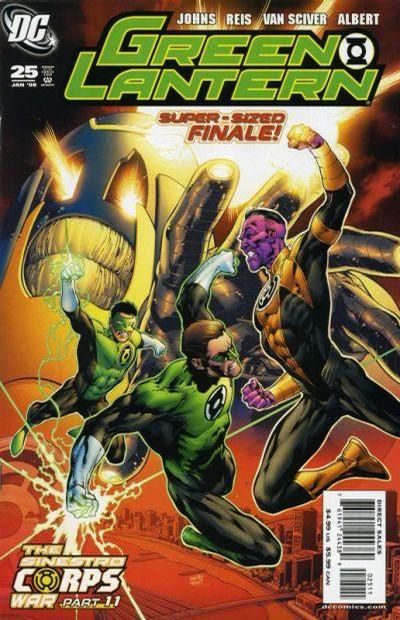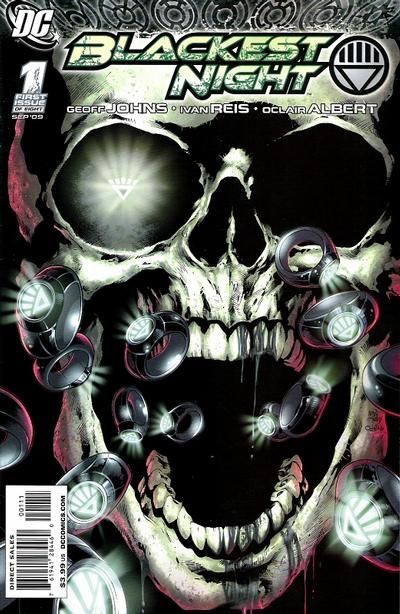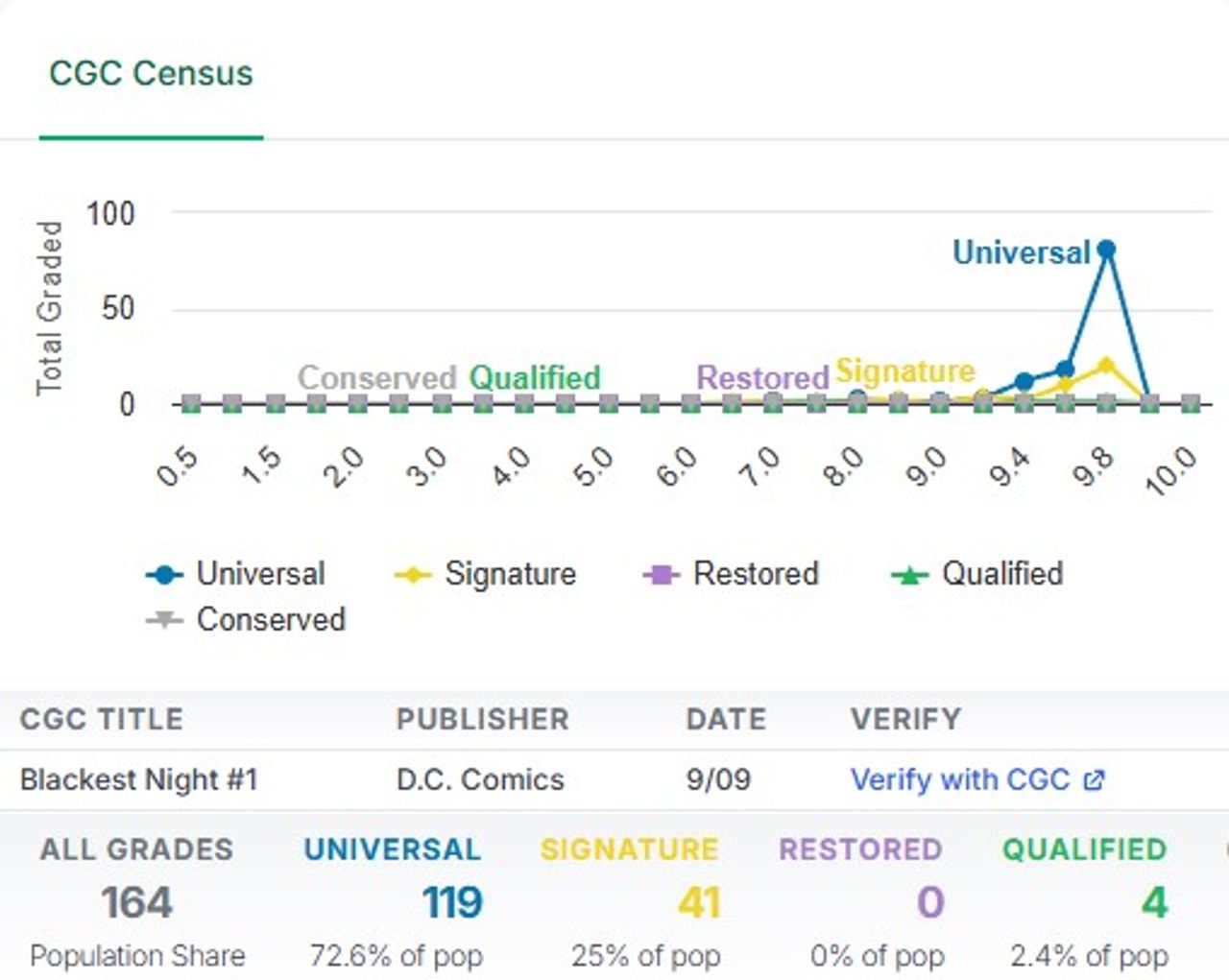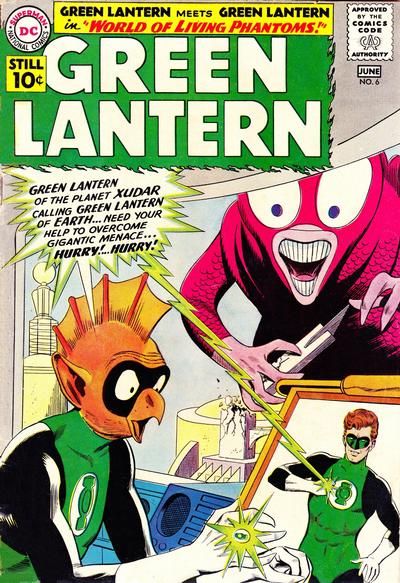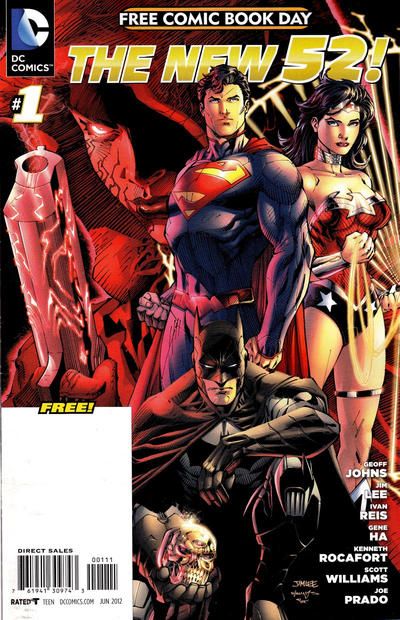For over eighty years, the Green Lantern has stood as a pillar of the DC Comics universe, a concept synonymous with willpower, cosmic adventure, and the boundless potential of imagination. Yet, navigating the vast history of the Emerald Knights—from the magical origins of Alan Scott to the sprawling intergalactic police force of the Green Lantern Corps—can be a daunting task. With multiple characters holding the title, universe-altering events, and decades of intricate continuity, identifying the truly essential stories requires a guiding light.
In this list we will explore the legacy of Green Lantern—from Alan Scott to Hal Jordan to John Stewart, and beyond! In this spotlight, we’re breaking down 20 Green Lantern comics you need to know about. We’ll cover their key moments and current CGC census numbers so you know why these books matter for collectors and fans alike.
Bear in mind, this is not a countdown—just a list of 20 books (and some honorable mentions) that have helped make Green Lantern an icon.
All-American Comics #16 (1940, DC Comics) Key Significant: First appearance and origin of Alan Scott, the Golden Age Green Lantern. Alan Scott, the original Green Lantern, debuted back in 1940—created by Martin Nodell with help on the early stories from Bill Finger. During the Golden Age of comics, he protected Capitol City (and later Gotham) using a magic ring, taking on street-level threats and everyday criminals. Fun Fact: Golden Age Green Lantern’s magic ring had one weird weakness—it couldn’t affect anything made of wood! So while Alan Scott could take on magical threats and gangsters, a baseball bat or wooden chair could still ruin his day. | ||
Showcase #22 (1959, DC Comics) Key Significant: First appearance and origin of Hal Jordan, the Silver Age Green Lantern. First appearance and death of Abin Sur. First appearance of Carol Ferris. Hal Jordan, the Green Lantern of the Silver Age, was introduced by writer John Broome and artist Gil Kane. As a fearless test pilot turned intergalactic cop, Hal hit the scene just as '50s and '60s pop culture was obsessed with space exploration—making him the perfect hero for a generation looking to the stars. Fun Fact: Hal Jordan was the first human ever chosen to join the Green Lantern Corps—an elite squad of space cops powered by willpower. Basically, he turned a day job as a test pilot into a cosmic gig patrolling the universe! | ||
Green Lantern #1 (1960, DC Comics) Key Significant: Hal Jordan Green Lantern's first solo issue. First appearance of the Guardians of the Universe. First appearance of Puppet Master. This issue features Hal Jordan’s first-ever journey to the planet Oa and the first appearance of the Guardians of the Universe, the ancient beings who run the Green Lantern Corps. It expanded the Green Lantern mythos beyond Earth and introduced the cosmic scale that would define the series for years to come. Fun Fact: Hal Jordan learns for the first time that he’s just one of many Green Lanterns patrolling the universe—making this the moment where the Corps went from concept to reality, and Oa became the home base for the entire space force! | ||
Green Lantern #7 (1960, DC Comics) Key Significant: First appearance and origin of Sinestro. Sinestro, one of Hal Jordan’s greatest enemies and a former Green Lantern himself. Once considered the best of the Corps, Sinestro is revealed to have abused his power, leading to his exile. This issue not only introduces a major villain but also sets up the idea that even the most trusted Lanterns can fall—adding layers of complexity to the Green Lantern universe. Fun Fact: Sinestro’s name literally means “sinister” in Italian—and it fits! He was originally designed with a mustache and a stern look to give off that classic “evil mastermind” vibe, making him one of the most iconic and recognizable villains in DC Comics. | ||
Green Lantern #16 (1960, DC Comics) Key Significant: First appearance and origin of Silver Age Star Sapphire. First appearance of Zamarons. First appearance of the Star Sapphire Gem Star Sapphire, a powerful character who becomes both a love interest and occasional adversary for Hal Jordan. This issue expands the Green Lantern universe by bringing in a new cosmic force tied to love and emotion, laying the groundwork for future stories that explore the emotional spectrum beyond just willpower. Fun Fact: The Star Sapphire’s power comes from a gem fueled by love—literally! But don’t get it twisted: her version of “love” can be super intense and sometimes even dangerous, making her one of the most complicated characters in the Green Lantern universe. | ||
Green Lantern #40 (1965, DC Comics) Key Significant: First appearance of Krona. Origin of the Guardians. Origin of Infinite Earths. First meeting between Golden Age Green Lantern, Alan Scott and Silver Age Green Lantern, Hal Jordan. The first time the concept of the DC Multiverse was directly explored in the Green Lantern title. While the Multiverse was first introduced in The Flash #123 with the meeting of Jay Garrick and Barry Allen, this issue built on that idea by having Hal Jordan team up with Golden Age Green Lantern Alan Scott. It helped solidify the existence of multiple Earths—specifically Earth-1 and Earth-2—as a core part of DC’s expanding universe. | ||
Green Lantern #59 (1968, DC Comics) Key Significant: First appearance of Guy Gardner. Guy Gardner, who would go on to become one of the most memorable and unpredictable members of the Green Lantern Corps. Originally introduced as a backup candidate to Hal Jordan, Guy’s tough attitude and unique approach to being a Lantern helped shake up the team dynamic in later years, especially during the Justice League International era. This issue laid the groundwork for a fan-favorite character who’s anything but by-the-book. Fun Fact: Guy Gardner’s bowl haircut is one of the most recognizable (and joked-about) styles in comics. It was actually inspired by the classic 1950s crew cut—but over time, it became part of his tough-guy persona and a running gag among fans and even characters in the DC Universe! | ||
Green Lantern #76 (1970, DC Comics) Key Significant: Green Arrow joins the Green Lantern title A landmark issue that kicked off the legendary run by Dennis O’Neil and Neal Adams, marking the beginning of the “Hard Traveling Heroes” era. This issue redefined Green Lantern by pairing Hal Jordan with Green Arrow and shifting the focus from cosmic threats to real-world social issues like racism, poverty, and corruption. It’s widely seen as the start of the Bronze Age of comics and proved that superhero stories could tackle serious, grounded topics without losing their punch. | ||
Green Lantern #87 (1971, DC Comics) Key Significant: First appearance of John Stewart. John Stewart, the first Black Green Lantern. Created by writer Dennis O’Neil and artist Neal Adams, John brought fresh perspective and diversity to the Green Lantern Corps. His debut opened the door for more inclusive storytelling and made him an enduring and popular character in the DC Universe. Fun Fact: John Stewart wasn’t just a Green Lantern—he’s also an architect! His background in architecture has been part of his character’s identity, often influencing how he uses his ring to create complex, precise constructs during battles. | ||
All-Star Squadron #25 (1983, DC Comics) Key Significant: First full appearance of Jade and Obsidian. Jade and Obsidian, the twin children of Alan Scott, the Golden Age Green Lantern. Jade inherits a natural connection to the Starheart, giving her the ability to create green energy constructs without a power ring. Obsidian, on the other hand, develops powerful shadow-based abilities and struggles with his darker nature. Their debut expands the Green Lantern mythos by introducing a mystical legacy and showing that the Green Lantern story isn’t just about the ring—it’s also about family, heritage, and the lasting impact of Alan Scott’s legacy in the DC Universe. | ||
Green Lantern Corps #201 (1986, DC Comics) Key Significant: First appearance of Kilowog. Title is renamed to The Green Lantern Corps. Kilowog, known for his strength, heart, and signature catchphrase “Poozer,” Kilowog quickly became the primary trainer of new recruits and one of the most recognizable members of the Corps. His debut here helped shift the series from focusing solely on Hal Jordan to embracing the larger universe of Green Lanterns, laying the groundwork for the modern cosmic era of the Corps. Fun Fact: Kilowog actually started out as a scientist on his home planet Bolovax Vik! Before barking orders at rookie Lanterns, he specialized in genetics and was one of his world's brightest minds. | ||
Green Lantern: Ganthet's Tale (1991, DC Comics) Key Significant: First appearance and origin of Ganthet Ganthet, one of the Guardians of the Universe, is portrayed as a more independent and compassionate figure among his kind. Written by legendary sci-fi author Larry Niven, this story helps redefine the Guardians—not as cold, emotionless overseers, but as beings capable of empathy and change. Ganthet’s rebellious spirit sets the stage for his future role as a key mentor, especially to Kyle Rayner. This story helped bridge the classic era of Green Lantern into the modern age, just before major shifts like Emerald Twilight. | ||
Green Lantern #48 (1994, DC Comics) Key Significant: First appearance of Kyle Rayner This issue kicks off the pivotal “Emerald Twilight” storyline, where Hal Jordan, devastated by the destruction of Coast City, begins his fall from hero to villain. Fueled by grief and desperation, Hal turns against the Guardians and the Corps in search of absolute power. This moment marks a turning point in the Green Lantern mythos, leading to the collapse of the Green Lantern Corps and setting the stage for a new ring bearer—Kyle Rayner. | ||
Hal Jordan launches a full attack on the Green Lantern Corps, battling the Guardians and taking down many Lanterns, throwing the Corps into chaos. This tragic fall leads to Hal becoming the villain Parallax, a powerful force driven by grief and desperation. With the Corps nearly wiped out, Ganthet passes the last power ring to Kyle Rayner, kicking off a brand-new chapter for Green Lantern and setting the stage for a new era in the mythos. | ||
Green Lantern #51 (1994, DC Comics) Key Significant: First full appearance of Kyle Rayner as the new Green Lantern Kyle Rayner, new Green Lantern. As the sole ring-bearer, he brought a fresh perspective to the role, relying on creativity and imagination to shape his powers. Kyle helped keep the Green Lantern legacy alive during a tough time and paved the way for the Corps’ eventual rebirth. Fun Fact: Kyle Rayner was originally created to be a comic book artist himself—and his powers reflect that! His ability to create energy constructs is often inspired by his artistic imagination, making him a unique and creative Green Lantern. | ||
Day of Judgment #5 (1999, DC Comics) Key Significant: First appearance of Hal Jordan as the new Spectre The return of Hal Jordan as the new Spectre, following his time as Parallax. Seeking redemption for his past actions, Hal becomes the host for the Spirit of Vengeance, giving him a second chance to do good—but in a very different role. This moment is a major turning point in Hal’s story and shows DC’s effort to redeem and reintegrate him into the larger universe after Emerald Twilight. | ||
DC: The New Frontier #1 (2004, DC Comics) Key Significant: Retelling of the origin of Hal Jordan Darwyn Cooke’s modern classic that bridges the gap between the Golden Age and Silver Age of DC Comics. It reimagines the origin of heroes like Hal Jordan in a post–World War II setting, exploring how the world transitioned from the era of the Justice Society to the rise of new icons like the Justice League. This first issue sets the tone for a story that honors DC’s rich history while building a timeless, unified origin for its most legendary heroes. Fun Fact: DC: The New Frontier was originally intended to be an Elseworlds story, set outside regular continuity—but it was so well-received that parts of it were later folded into DC canon. Even though it stands on its own, the story’s respectful nod to history and fresh take on heroism made it feel like it belonged right alongside the main timeline. | ||
Green Lantern: Rebirth #1 (2004, DC Comics) Key Significant: Hal Jordan becomes Green Lantern again Hal Jordan’s return as Green Lantern, written by Geoff Johns. After years as Parallax and time as the Spectre, Hal is finally brought back to life and cleared of his villainous past. Rebirth also redefines Parallax as a fear-based cosmic entity that corrupted Hal, restoring his status as a hero. This story sets the foundation for the full revival of the Green Lantern Corps and launches a new era of popularity for the franchise. | ||
Green Lantern:Sinestro Corps Special #1 (2007, DC Comics) Key Significant: First full appearance of the Sinestro Corps as an organized force, powered by yellow rings fueled by fear Sinestro Corps War, one of the most important Green Lantern events of the modern era. It introduces the idea of Sinestro leading his own Corps powered by fear, directly opposing the Green Lanterns' willpower. It also marks the return of major villains like the Anti-Monitor, Cyborg Superman, and Parallax (now possessing Kyle Rayner). This special laid the groundwork for the emotional spectrum mythology that would soon redefine the entire Green Lantern universe. | ||
Green Lantern #25 (2007, DC Comics) Key Significant: First appearance of the other Lantern Corps. First appearance of Atrocitus, the Red Lantern. First appearance of Larfleeze, the Orange Lantern. First appearance of Saint Walker, the Blue Lantern. First appearance of Iroque, the Indigo Lantern. This issue lays out the full emotional spectrum for the first time, showing a chart of each emotion and its corresponding Lantern Corps. This backup planted the seeds for the events of Blackest Night and Brightest Day and turned Green Lantern into one of DC’s biggest titles of the late 2000s. | ||
In the Green Lantern mythos, the emotional spectrum is a range of energies powered by emotions, with each color representing a different feeling and forming its own Lantern Corps:
And beyond the traditional colors:
| ||
Blackest Night #1 (2009, DC Comics) Key Significant: First full appearance of the Black Lantern Corps Black Lantern Corps—powered by death—rises to threaten the entire DC Universe. It introduces the concept of the Black Rings, which reanimate deceased heroes and villains as undead Black Lanterns, forcing living heroes to confront their pasts and lost loved ones. Blackest Night #1 sets the stage for a high-stakes battle across all Lantern Corps and reshapes the emotional spectrum’s role in DC’s cosmic storytelling. | ||
These books are honorable mentions because they showcase other Green Lantern characters who have joined the Corps. While they’re just as important as the others, they don’t quite make the top 20 list. Green Lantern #6 (1961) Green Lantern #188 (1985) Justice League International #10 (1987) Justice League #50 (2016) Free Comic Book Day 2012: DC Comics the New 52 #1 (2012) Far Sector #1 (2020) | ||
If you want to hear more about these books and why they matter, check out my video on YouTube where I discuss in more detail the importance of these books and more.
| ||
